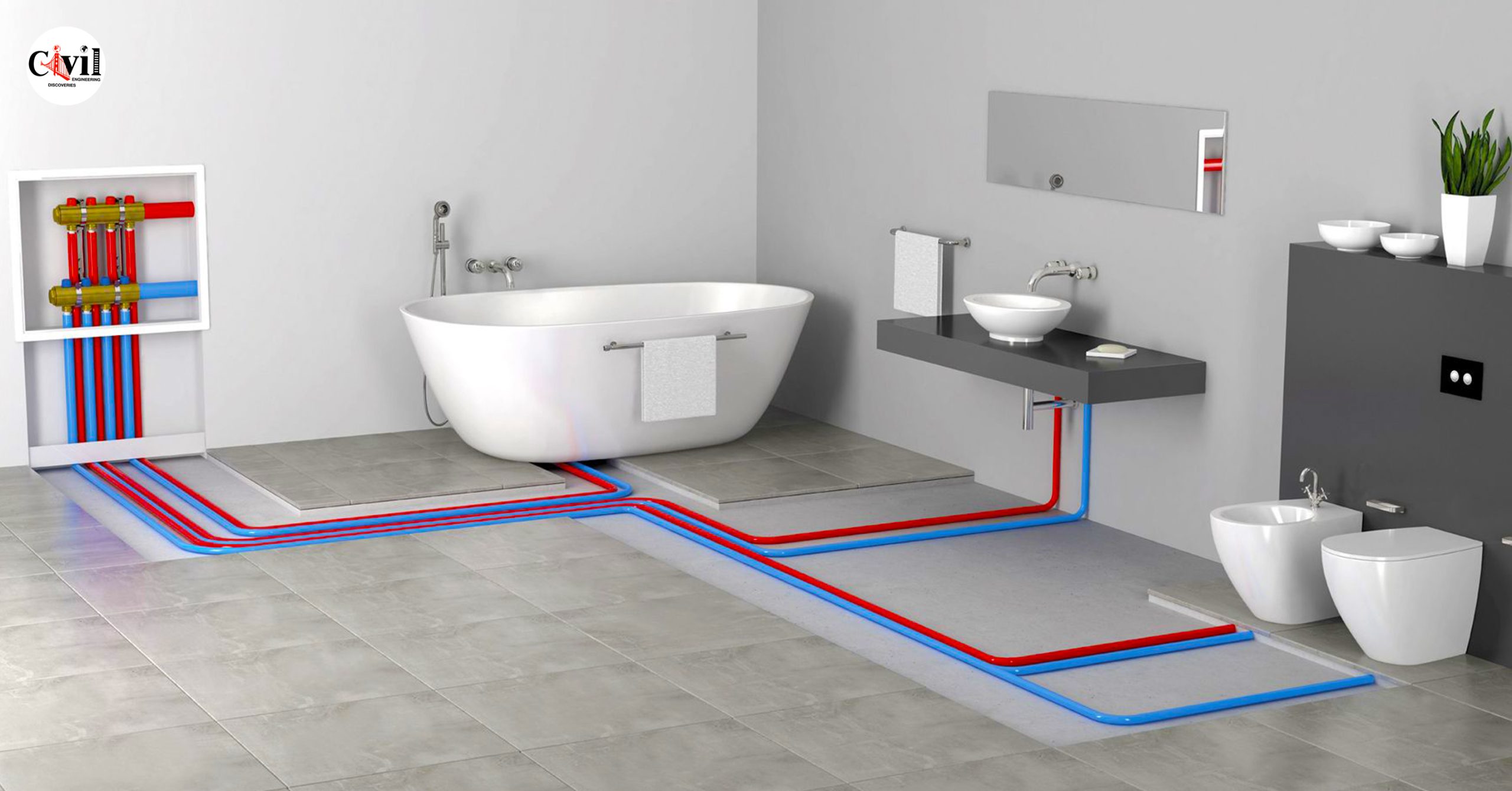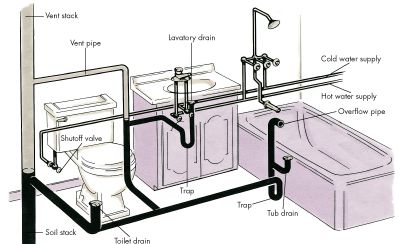Understanding The Anatomy of Your Home's Plumbing System
Understanding The Anatomy of Your Home's Plumbing System
Blog Article
Presented here below you can discover a good deal of quality guidance involving Anatomy of a House: Understanding the Components.

Recognizing exactly how your home's pipes system functions is necessary for every single property owner. From delivering tidy water for drinking, cooking, and showering to safely removing wastewater, a properly maintained pipes system is vital for your household's health and wellness and comfort. In this extensive overview, we'll check out the complex network that makes up your home's pipes and offer pointers on maintenance, upgrades, and handling usual issues.
Intro
Your home's plumbing system is greater than just a network of pipelines; it's a complicated system that guarantees you have access to tidy water and effective wastewater removal. Knowing its components and just how they collaborate can help you prevent pricey repair services and guarantee everything runs efficiently.
Basic Elements of a Plumbing System
Pipelines and Tubing
At the heart of your plumbing system are the pipelines and tubing that lug water throughout your home. These can be constructed from different products such as copper, PVC, or PEX, each with its benefits in terms of durability and cost-effectiveness.
Components: Sinks, Toilets, Showers, and so on.
Fixtures like sinks, toilets, showers, and tubs are where water is used in your house. Comprehending just how these components connect to the pipes system helps in detecting issues and intending upgrades.
Shutoffs and Shut-off Points
Shutoffs control the circulation of water in your plumbing system. Shut-off shutoffs are essential throughout emergencies or when you require to make repair work, permitting you to separate parts of the system without interrupting water flow to the entire residence.
Water System System
Main Water Line
The primary water line connects your home to the local water supply or a personal well. It's where water enters your home and is dispersed to different fixtures.
Water Meter and Stress Regulator
The water meter procedures your water usage, while a stress regulatory authority guarantees that water moves at a safe stress throughout your home's pipes system, avoiding damages to pipelines and components.
Cold Water vs. Hot Water Lines
Understanding the difference in between cold water lines, which supply water straight from the major, and warm water lines, which carry heated water from the hot water heater, helps in fixing and preparing for upgrades.
Drainage System
Drain Pipes Pipes and Traps
Drain pipes lug wastewater far from sinks, showers, and commodes to the sewer or sewage-disposal tank. Catches prevent drain gases from entering your home and likewise catch debris that could trigger obstructions.
Air flow Pipelines
Air flow pipes allow air into the drainage system, avoiding suction that can reduce drainage and cause traps to vacant. Correct air flow is essential for preserving the honesty of your plumbing system.
Significance of Appropriate Drain
Making sure appropriate drainage avoids back-ups and water damages. Consistently cleansing drains and maintaining traps can prevent costly repairs and extend the life of your plumbing system.
Water Heating Unit
Kinds Of Water Heaters
Water heaters can be tankless or standard tank-style. Tankless heaters warmth water as needed, while containers save warmed water for prompt usage.
Updating Your Plumbing System
Reasons for Upgrading
Updating to water-efficient components or changing old pipelines can boost water high quality, minimize water bills, and increase the value of your home.
Modern Pipes Technologies and Their Advantages
Discover modern technologies like smart leak detectors, water-saving bathrooms, and energy-efficient hot water heater that can save money and reduce environmental influence.
Price Factors To Consider and ROI
Determine the upfront prices versus lasting cost savings when thinking about plumbing upgrades. Many upgrades spend for themselves via reduced energy costs and less repair work.
How Water Heaters Attach to the Pipes System
Comprehending how hot water heater link to both the cold water supply and warm water distribution lines aids in detecting concerns like not enough warm water or leakages.
Maintenance Tips for Water Heaters
Consistently flushing your water heater to eliminate debris, checking the temperature settings, and examining for leaks can prolong its life-span and improve energy performance.
Usual Plumbing Issues
Leaks and Their Reasons
Leakages can take place due to maturing pipes, loosened fittings, or high water stress. Addressing leakages immediately stops water damages and mold and mildew growth.
Clogs and Clogs
Blockages in drains and bathrooms are commonly triggered by flushing non-flushable things or an accumulation of oil and hair. Using drain displays and being mindful of what goes down your drains can avoid blockages.
Indications of Pipes Issues to Expect
Low tide pressure, sluggish drains, foul odors, or uncommonly high water expenses are indications of possible pipes issues that need to be addressed without delay.
Plumbing Upkeep Tips
Normal Examinations and Checks
Set up yearly pipes examinations to capture concerns early. Seek indicators of leakages, rust, or mineral accumulation in taps and showerheads.
Do It Yourself Upkeep Tasks
Simple jobs like cleansing faucet aerators, checking for toilet leakages utilizing dye tablets, or insulating exposed pipelines in chilly climates can stop major plumbing concerns.
When to Call an Expert Plumber
Know when a pipes problem requires expert proficiency. Attempting intricate repairs without proper expertise can lead to even more damage and greater repair work costs.
Tips for Minimizing Water Usage
Straightforward routines like repairing leakages without delay, taking much shorter showers, and running complete tons of laundry and dishes can save water and lower your energy costs.
Eco-Friendly Plumbing Options
Consider sustainable pipes materials like bamboo for flooring, which is durable and green, or recycled glass for counter tops.
Emergency Readiness
Steps to Take Throughout a Plumbing Emergency
Know where your shut-off valves lie and how to turn off the supply of water in case of a burst pipeline or major leakage.
Importance of Having Emergency Situation Contacts Useful
Keep get in touch with details for regional plumbings or emergency situation solutions readily offered for quick action throughout a plumbing dilemma.
Ecological Impact and Preservation
Water-Saving Fixtures and Home Appliances
Mounting low-flow taps, showerheads, and commodes can considerably lower water usage without compromising efficiency.
Do It Yourself Emergency Fixes (When Suitable).
Short-lived fixes like using duct tape to spot a leaking pipe or putting a pail under a trickling tap can reduce damages until an expert plumber shows up.
Verdict.
Recognizing the composition of your home's pipes system encourages you to maintain it successfully, conserving time and money on repair services. By following routine upkeep regimens and staying educated concerning modern plumbing modern technologies, you can guarantee your plumbing system runs successfully for years to find.
HOW YOUR PLUMBING SYSTEM WORKS
Which Pipes Do What?
Blue lines = fresh water supply entering the building Red lines = hot water supply entering the building Grey lines = pipes carrying waste away from the building and venting pipes carrying gases away from the building (through the roof) YOUR MAIN PLUMBING SYSTEMS
There are two main plumbing systems that support your home s basic plumbing needs one that brings clean water into your home, and one that sends dirty water away from your home. Connected to the toilet, bath, shower, and other faucets in your home, these two systems keep your water flowing in the right directions.
ACCESSING FRESH WATER
Fresh and clean water is brought into your home through the main water supply line . Filtered through one pipe, this water is pressured to flow into the various fixtures in your home at any given time.
This water can be sourced from a well located on your property, a pond or river (mostly cottages), or, as in most cases, from the city s municipal water treatment centre. However, it is important to note that water that is untreated, such as the water siphoned from ponds or rivers, may not be safe to drink. Personal water supplies always need to be treated for hardness and contaminants before consumed.
MUNICIPAL WATER SUPPLIES
Improve taste and odour Remove sediment Eliminate hardness Reduce chlorine COLD WATER SUPPLY VS. HOT WATER SUPPLY
Cold water flows into your home or building through the service line, which then distributes hot or cold water to your fixtures. This line is most commonly run through a central column that runs floor to floor. Hot water runs in short and straight pipes as the longer the pipeline, the more heat that will be lost in the transfer. Having shorter pipes also allows residents to access hot water more quickly.
WASTE WATER SYSTEM
Your wastewater system is divided into two parts pipes that send wastewater away from your home and venting pipes that send sewer gas away from your home. Sewage water travels through pipes that flush the water and waste towards local sewers that are operated and managed by your city or town. Most sewer systems rely on gravity to move the wastewater to where it needs to go.
The further away from your toilet or sink, the larger wastewater pipes become. This allows for waste to be disposed of from various parts of your home or business at once without pipe blockages. The angle and flow of these pipes are also essential for keeping your waste pipes clear of build up.
https://harrisplumbing.ca/how-your-home-plumbing-system-works/

Do you like reading about Exploring Your Homes Plumbing Anatomy? Write a comment down the page. We'd be glad to find out your opinion about this piece. We are looking forward to see you back again in the future. I beg you pause to distribute this entry if you enjoyed it. Thanks a lot for taking the time to read it.
Book Now Report this page